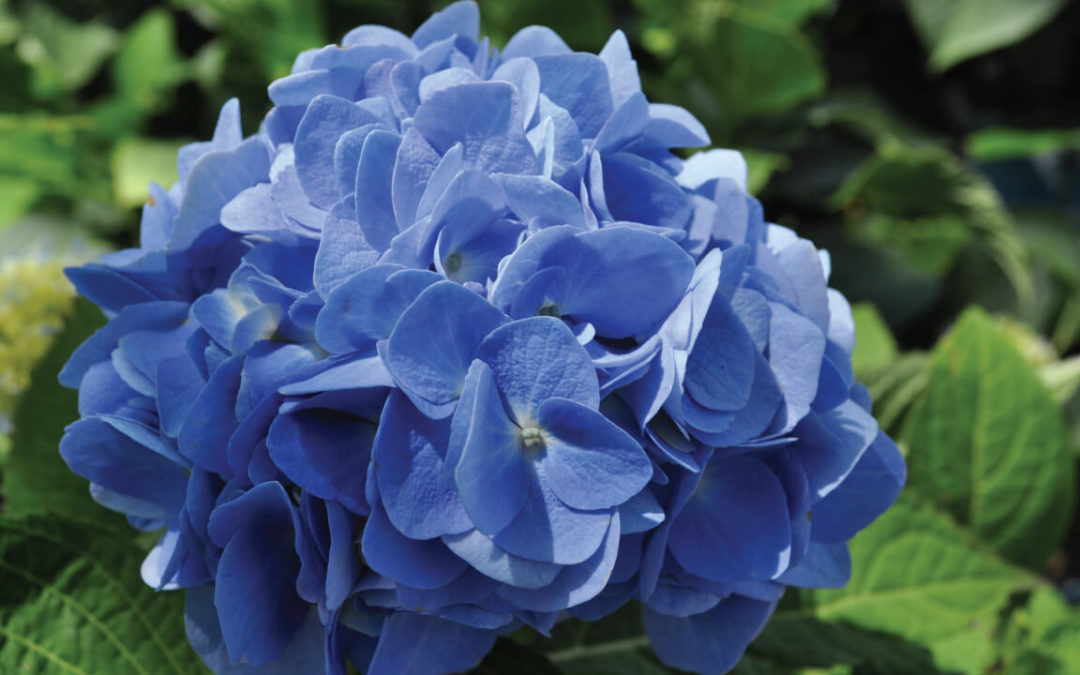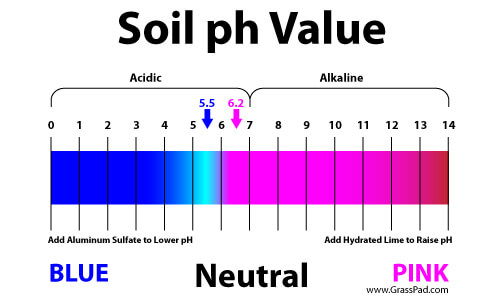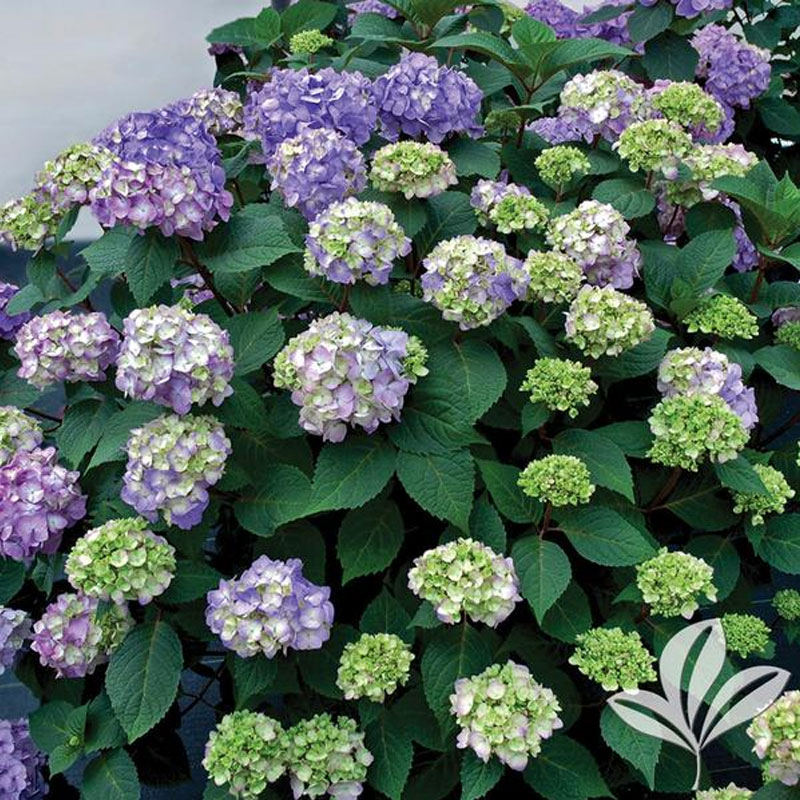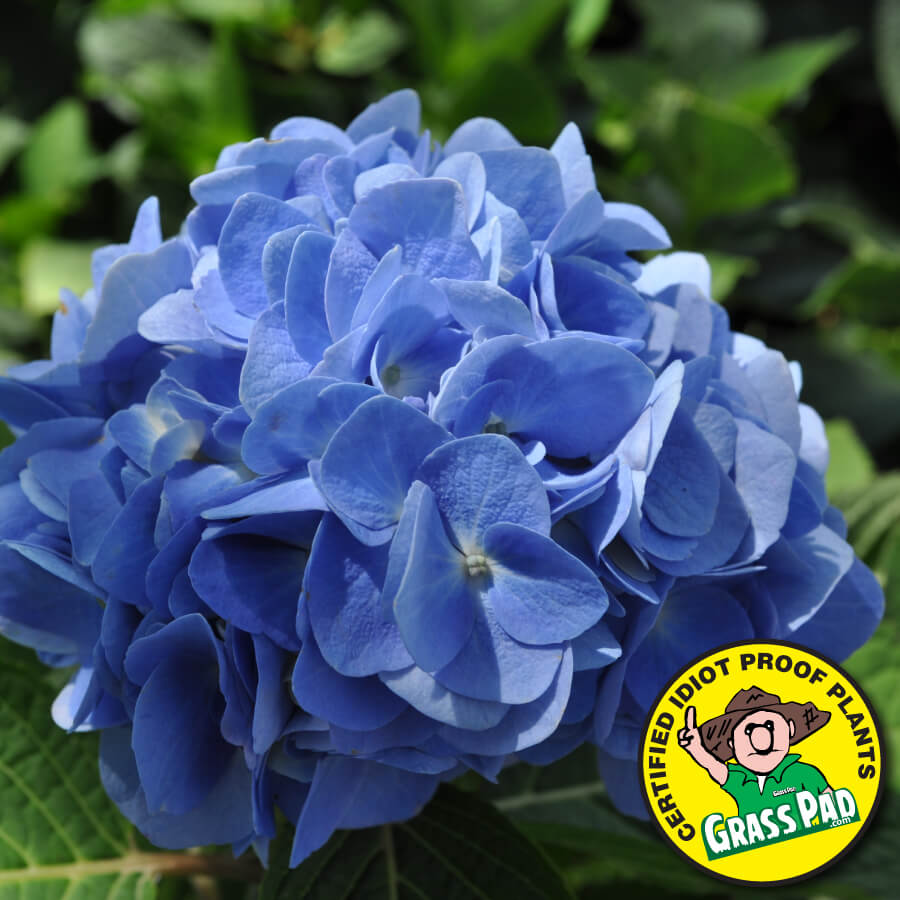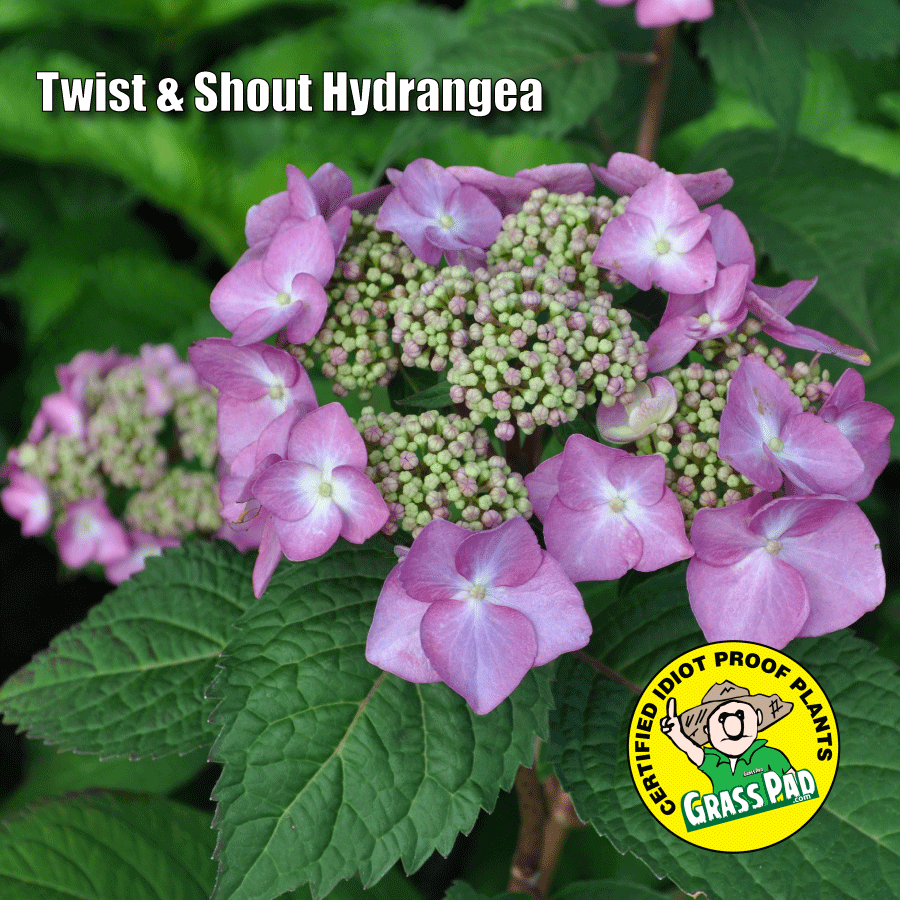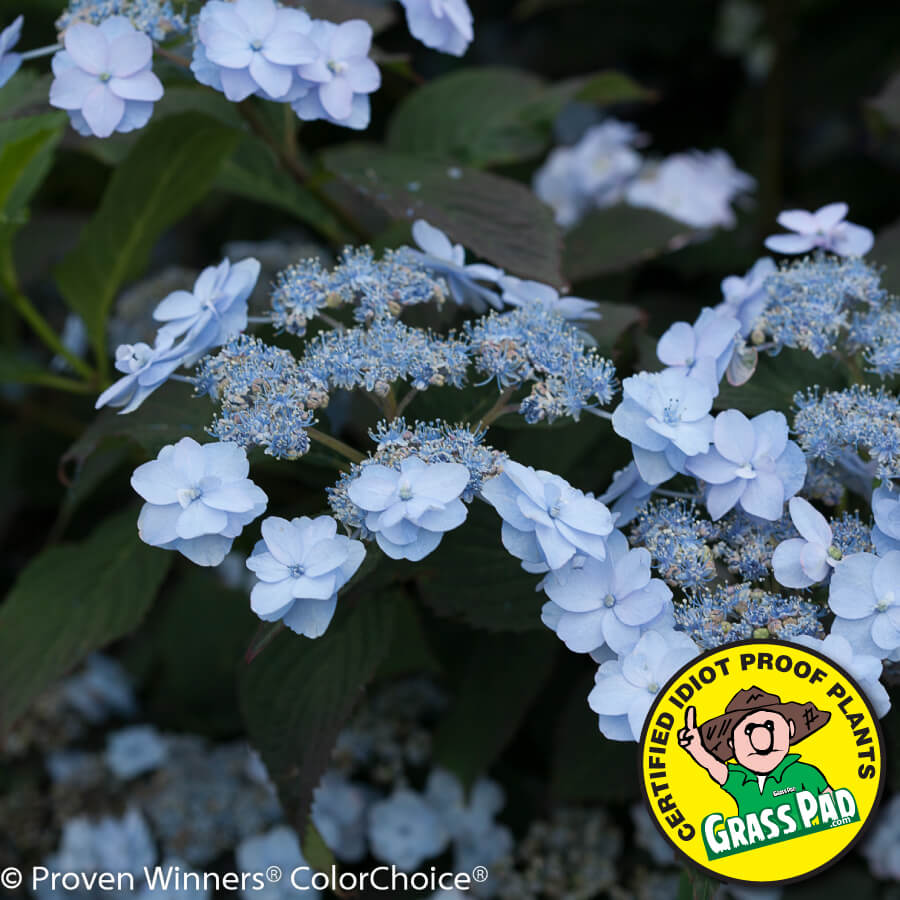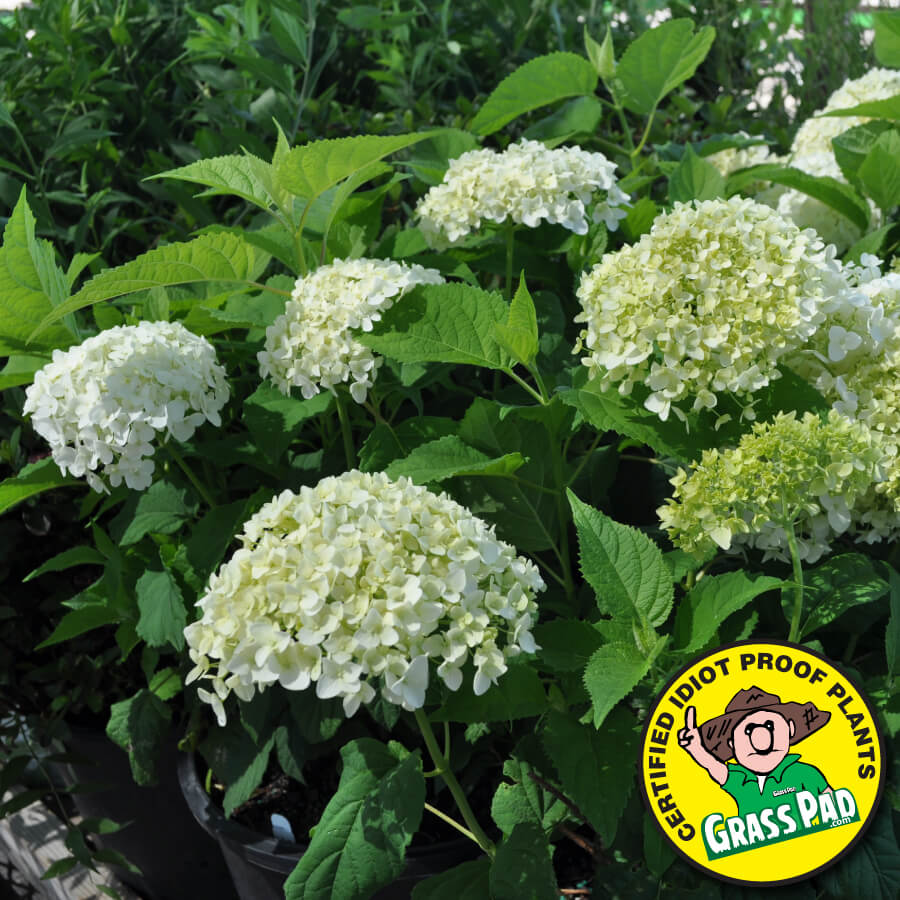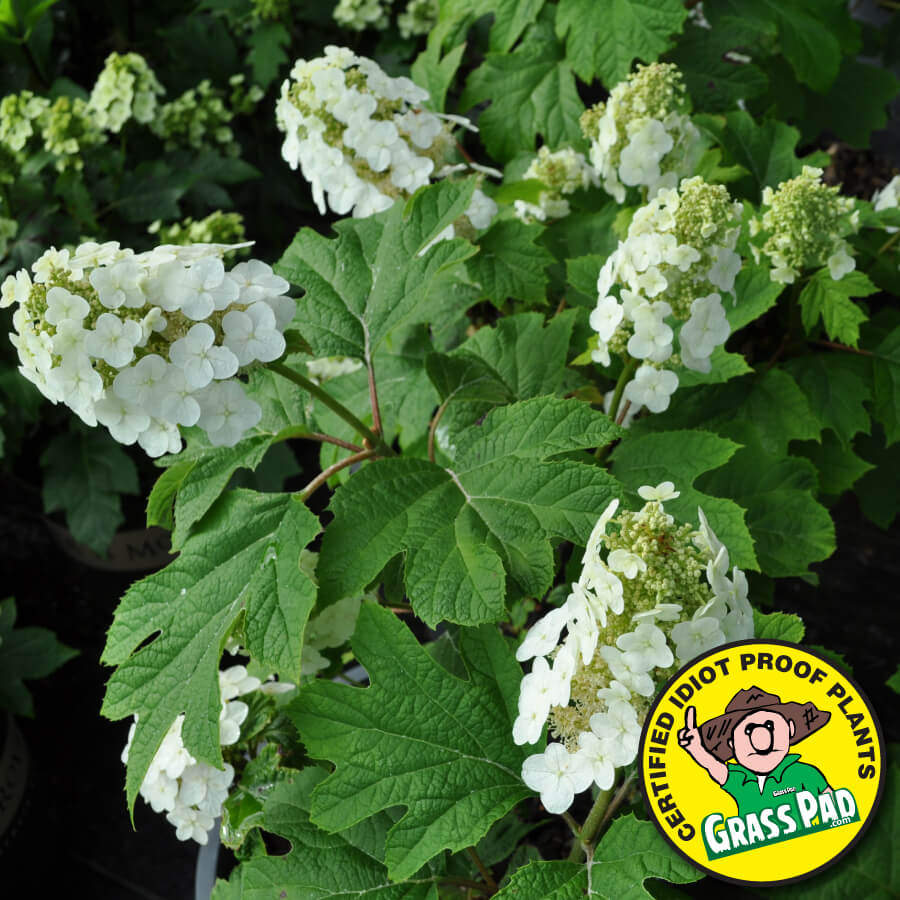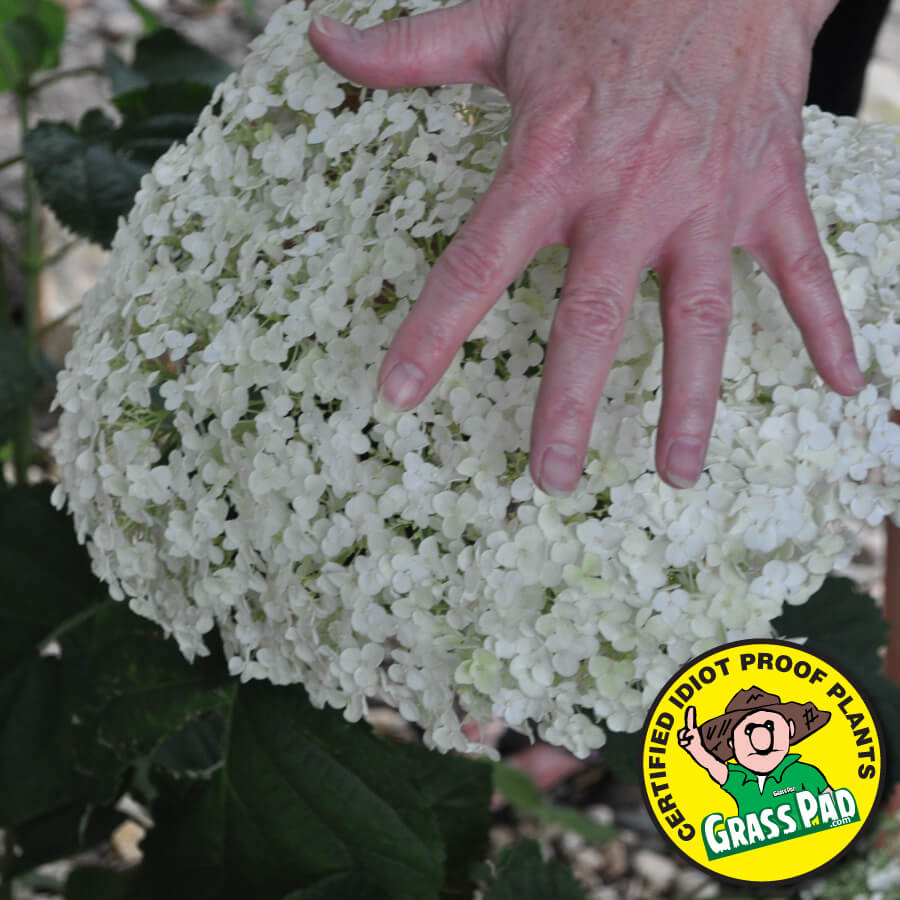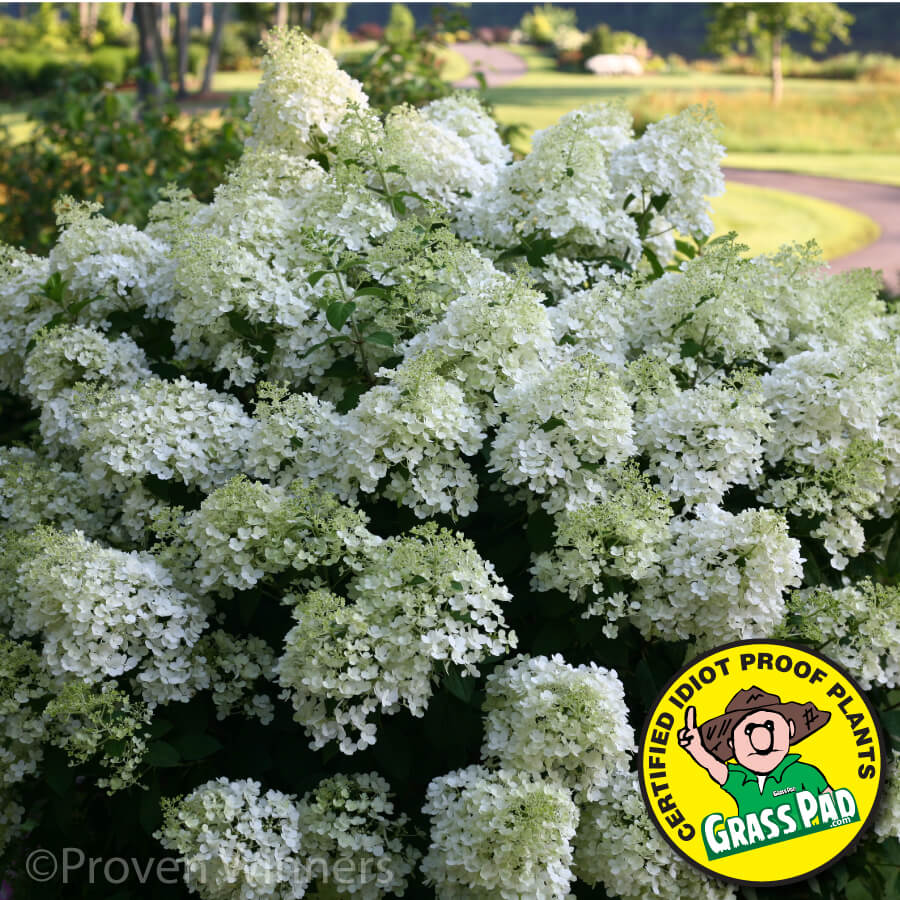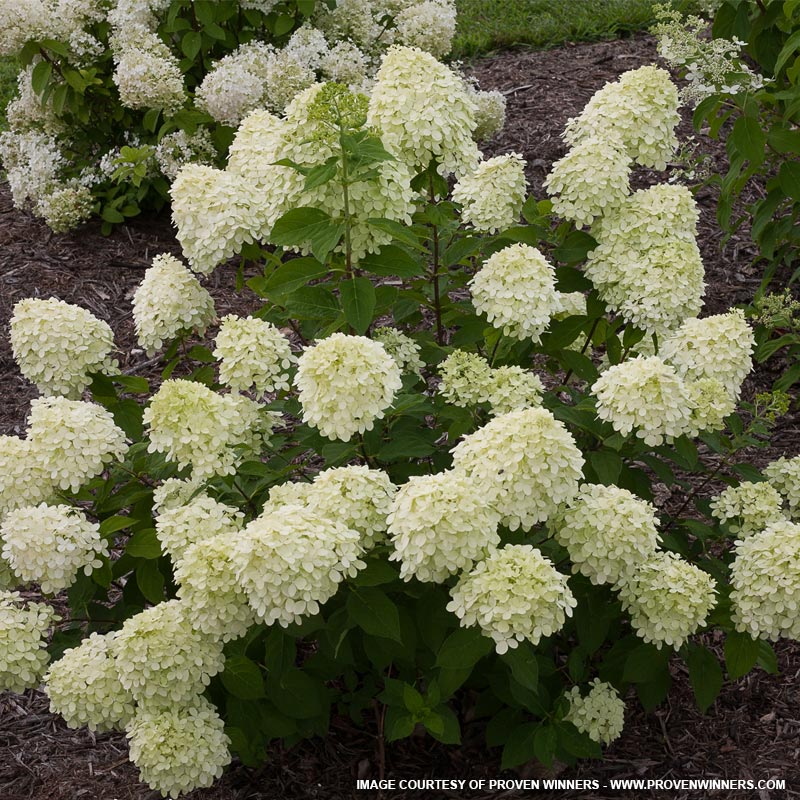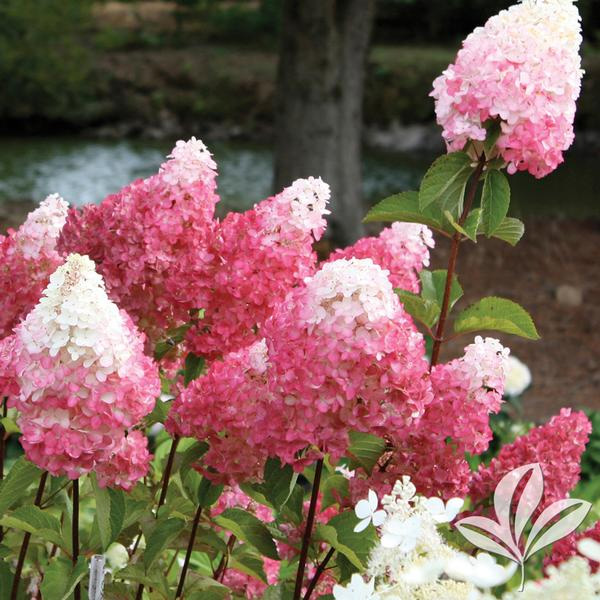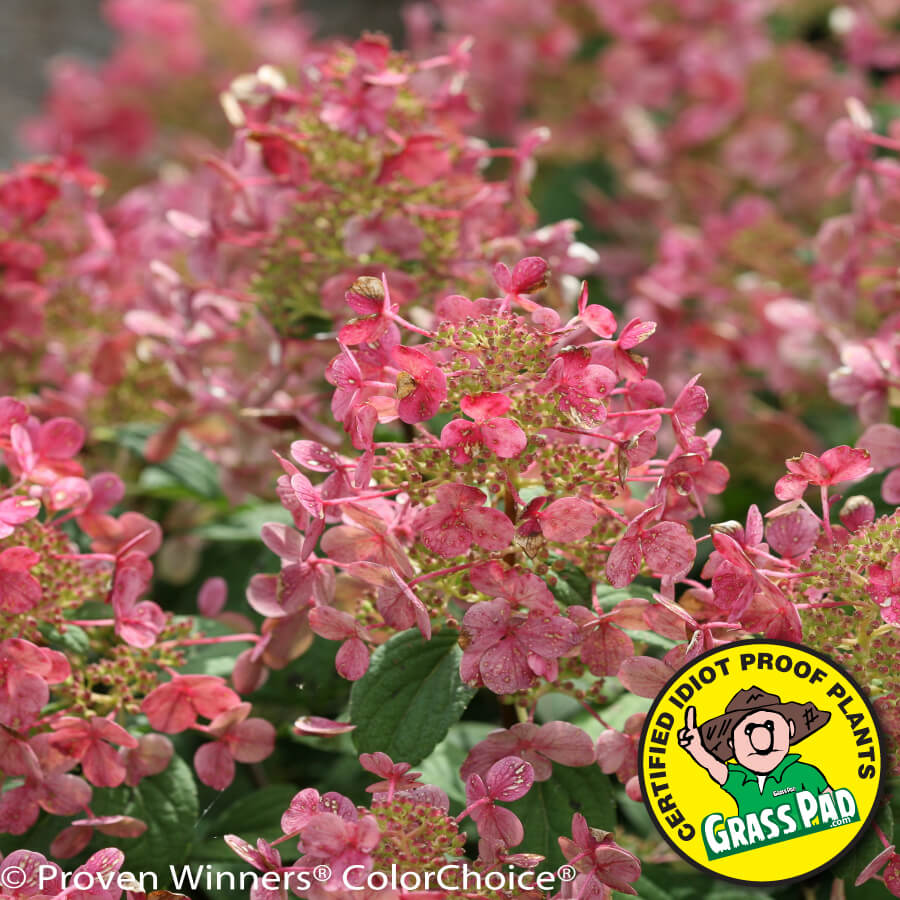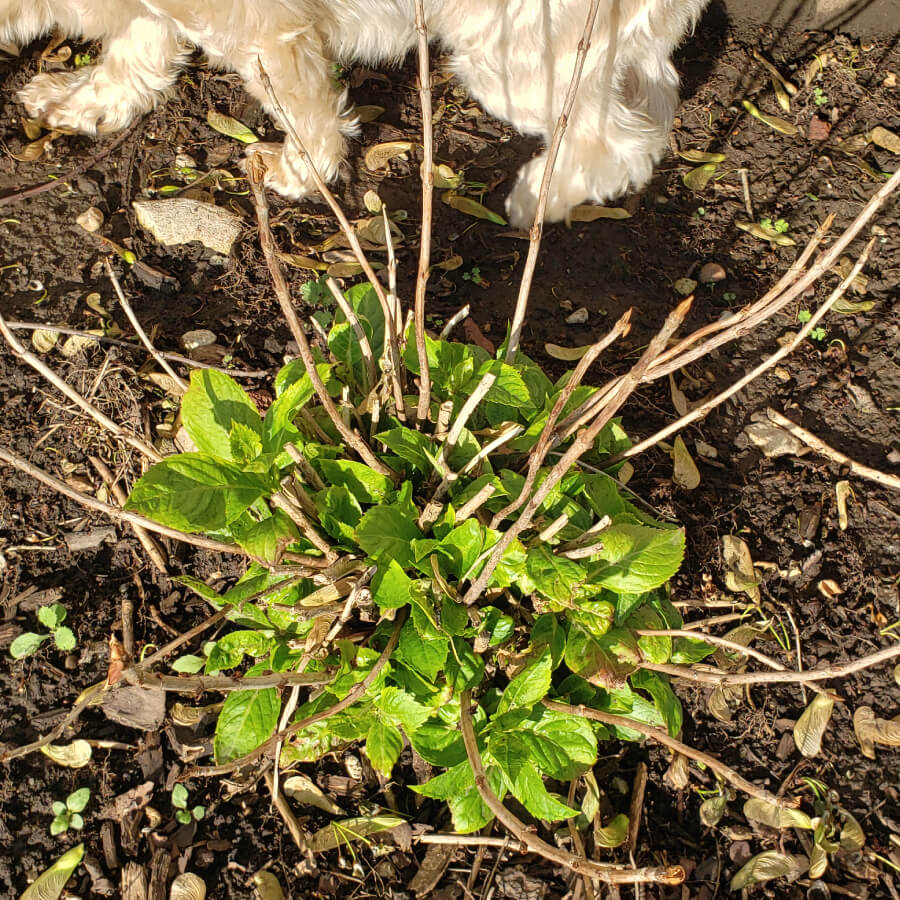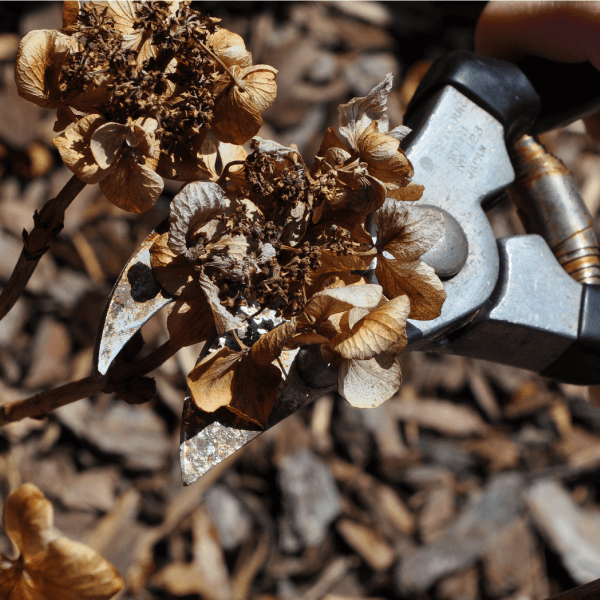Why Do Hydrangea Flowers Change Color?
One of the most exciting habits of some hydrangeas is the ability of the flowers to change color. This is not true of all hydrangeas, but most often seen in the mophead and lacecap (or mountain) cultivars of hydrangea macrophylla.
Those hydrangea with blue or pink flowers tend to be blue in acid soil conditions and pink in alkaline conditions. To get the best flower color, choose cultivars that give the best colors for the pH in question. White flowers will remain white regardless of soil pH as well as varieties with deep red blooms such as the Cityline ‘Paris’. Hydrangeas with blue flowers can be kept blue by growing the plants in acidic soil, or by acidifying soils. In soils where hydrangeas are not reliably blue, add aluminum sulfate. If the soil is very alkaline, this treatment may not work but can be very useful for container-grown plants. Use rainwater to water hydrangeas, since hard water can affect the flower color, turning blue flowers pink. Boost red or pink flowers, by applying granular lime in winter
How to Change Hydrangea Flower Color?
In pink and blue mophead-type hydrangea, the flower color is dependent on the pH balance of your soil and the presence (or lack of) aluminum: you’ll have clear pink blooms in alkaline soils and blue flowers in acidic soils. To obtain a blue hydrangea, aluminum must be present in the soil. To ensure that aluminum is present, aluminum sulfate may be added to the soil around the hydrangea a solution of 1 tablespoon of aluminum sulfate per gallon of water to be applied to the plant throughout the growing season. Important: Water your plants well in advance of application and put solution on cautiously, as too much can burn the roots. Another method for lowering the pH of the soil is to add large amounts of organic matter such as Uncle’s Max Mix to the soil when planting. For hydrangea blooms to be pink, the plants must not take up aluminum from the soil, if the soil naturally contains aluminum, one must try to keep it away from the hydrangea’s system. Add lime several times a year. This will help to raise the pH. Since hydrangeas take up aluminum best at lower pH levels, raising the pH will help to keep the bluing effect of aluminum out of the hydrangeas system.
What Are Reblooming Hydrangea?
Reblooming hydrangeas give an advantage to gardeners in cold climates to enjoy hydrangea blooms despite cold winters. Reblooming hydrangeas have a unique ability to set buds on both new wood growth in spring and old wood in fall. If flower buds are damaged by winter weather, and damage is not too severe, the plant can produce flowers on new growth. Reblooming hydrangea varieties include the Endless Summer®, Bloom Struck, and Let’s Dance. These mophead and lacecap varieties, such as Twist and Shout®, Tuff Stuff™, and Tiny Tuff Stuff™ hydrangeas, will bloom with little attention. Still, regular pruning encourages new growth that can produce a better display.
Where to Plant Macrophylla Hydrangeas?
The flower mops range from four to six inches in garden conditions, and up to eight inches when planted in containers. Foliage is a medium-to-deep green, and has shown good mildew resistance. The plant grows three to five feet in width and height. It is partial to sun, enjoys a rich soil, and requires abundant water.
Because of their size and dense foliage, hydrangeas are treasured as shrubs and border plants. They can be used to define boundaries, create a planting “area,” or provide a backdrop for other flowering plants in your landscape. These big leaf hydrangeas thrive in moist but well-drained soil, preferring morning sun. Avoid planting macrophylla hydrangea (mophead and lacecap types) in dry, with full sun exposed areas, or unprotected areas where extreme cold winds may damage young spring growth.
Can I Plant Hydrangeas in the Sun?
Uncle’s Idiot Proof hydrangeas are the panicle and arborescence (smooth) type hydrangea. These types are sun-lovers. While they prefer the sun, these hydrangeas will do just fine in partial shade, too. Both panicle and smooth hydrangeas, such as the white Annebelle, the Incrediball® and the red Invincebelle Ruby® hydrangea bloom late in summer on new wood. Unlike their famous shade-loving cousins, the macrophylla, or mop head hydrangea, which bloom on old wood. Hydrangea quercifolia, also known as Oakleaf hydrangeas, such as Alice and Ruby Slipper, are sun-loving hydrangea that flower on old wood growth.
New Hydrangea Varieties
In the last few years, breeders have been developing many excellent varieties along with introducing new colors with bright whites, creams, lime green, and various shades of pink. Some of our most popular panicle hydrangeas are the Bobo, Quick Fire, and Limelight. Limelight, with its huge football-shaped flowers, has almost revolutionized landscaping across America. Opening into light green, the blooms age to a bouquet of pink, red, and burgundy persisting through frost. Breeders have recently introduced a sibling Little Limelight growing three to five feet tall and wide. Proven Winner’s panicle hydrangea collection includes Quick Fire and a dwarf version Little Quick Fire. One of the first hydrangeas to bloom, the Quick Fire bloom emerges bright white and as blooms age; they change color to pink and finally red, giving the plant a multicolored effect in late summer and early fall.
Why Won’t My Hydrangea Bloom?
Hydrangea failing to bloom is a common dilemma for many of the older varieties of macrophylla and oakleaf hydrangeas. An unseasonable hard freeze or an improper pruning is typically the cause. These hydrangea types bloom on old wood. Winters with extreme freezing temperatures can injure unprotected flower buds. A pre-winter routine to protect these big leaf hydrangea blooms is to pile fallen tree leaves over the top of the plant for winter bud protection. Pruning out of season, too late in winter or too early in spring, will result in cutting off flower buds formed the previous season.
When to Prune a Hydrangea?
Panicle and arborescence hydrangea are the perfect idiot-proof hydrangeas. Blooming late in summer on new wood, they require no special mulching or pruning techniques to see blooms the next year. If you forget to prune a paniculata hydrangea the previous season, no worries, shape them up during the winter thaw or the following spring.
The same is not valid for its cousins, the macrophylla hydrangeas. Mophead, lace-cap and oakleaf varieties of hydrangea bloom on old wood and should be pruned soon after blooms fade in late summer to early fall.
When to prune Endless Summer Hydrangea?
Endless Summer hydrangea needs very little pruning through the seasons. However, early spring is a good time if you must shape them. Wait to cut until you see new growth on the stem. Endless Summer blooms on old and new wood. Be careful not to prune off any early-season blooms. If the buds and branches are brown and crunchy, you can remove those, but leave any that are green and soft.
What Is the Best Way to Plant Hydrangea?
When planting a hydrangea, use a balanced blend of Uncle’s Max Mix, mixed with native soil as backfill. Add organic matter after planting by using Uncle’s Black Magic peat compost as a top dressing. Consider using pine bark mulch to help soil acidity for mophead varieties.
Fertilize hydrangeas with Uncle’s Root Accelerator, low nitrogen plant starter, at planting. Avoid feeding too often, with high nitrogen fertilizers, which can encourage excessive leaf growth, with plants less likely to develop flower buds and more at risk from winter damage.
More Related Articles to Hydrangeas:
Uncle’s Root Accelerator – Keeping Plants Healthy
- Uncle’s Root Accelerator gives plants a healthy start. Learn More at this Link
Uncle’s Max Mix – The Secret is in the Soil
- Uncle’s Max Mix is a premium-grade horticultural planting mix. Learn More at this Link
Grass Pad Nursery Stock
- Search Idiot-Proof plant selections available at Grass Pad. Learn more at this link.
How to Fertilize for Healthy Trees and Shrubs
- Tips for fertilizing new and existing shrubs in landscapes. Learn more at this link.
Guide to Planting Trees and Shrubs
- How to plant trees and shrubs for best results. Learn more at this link.

